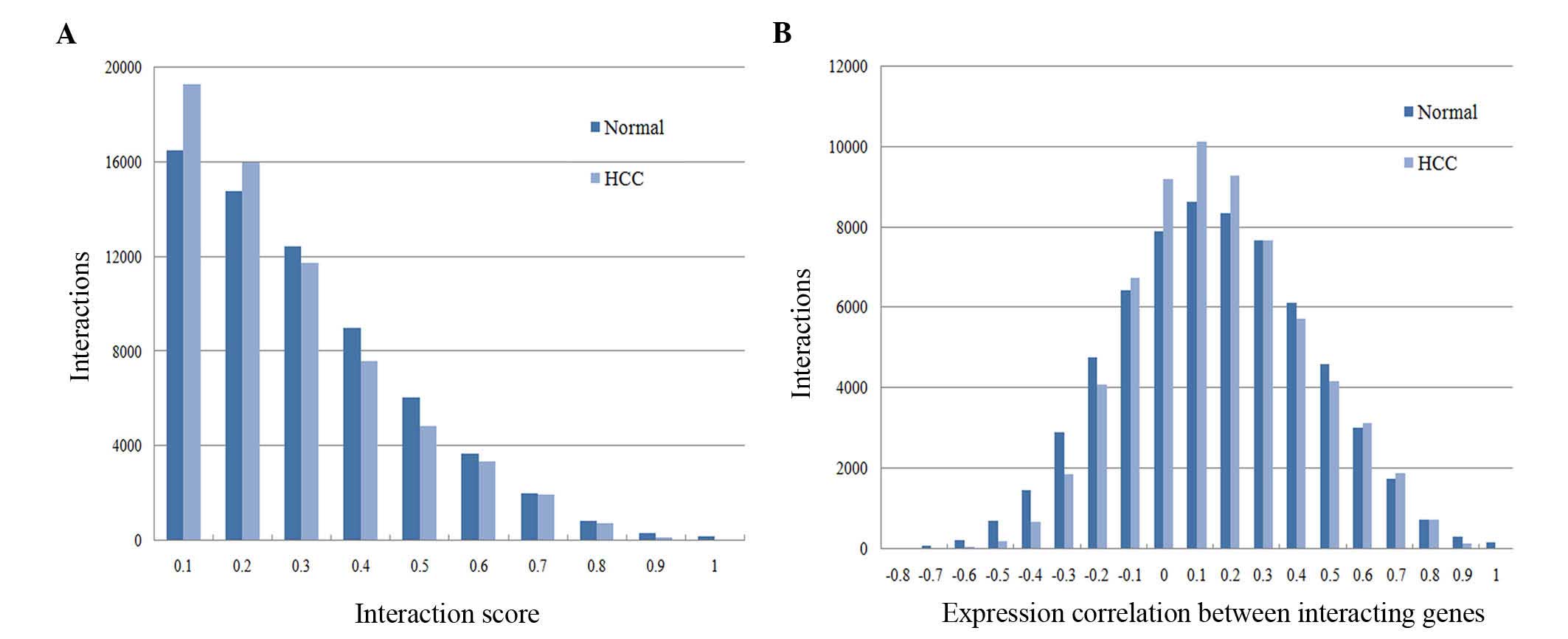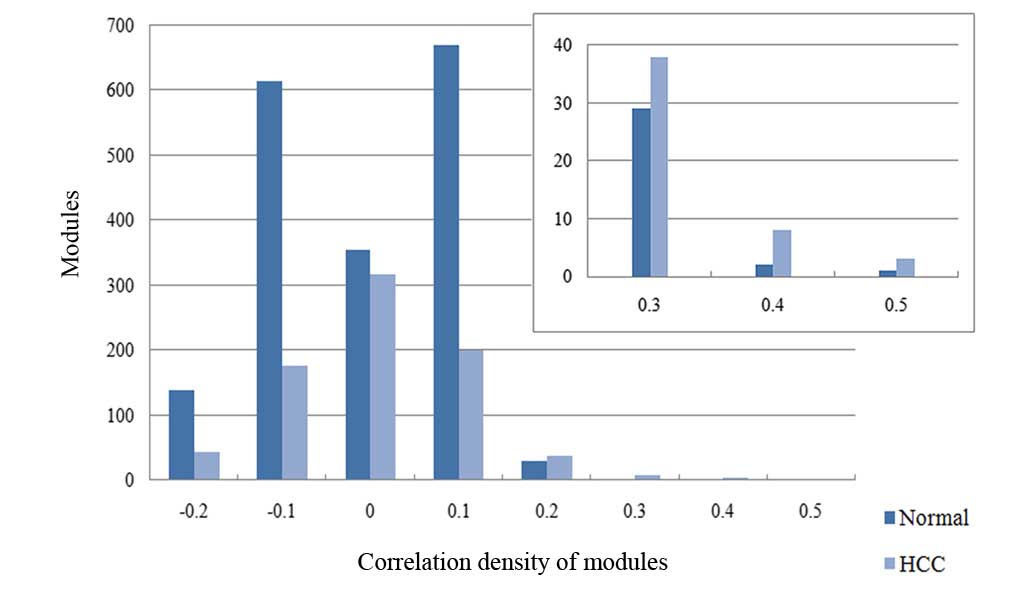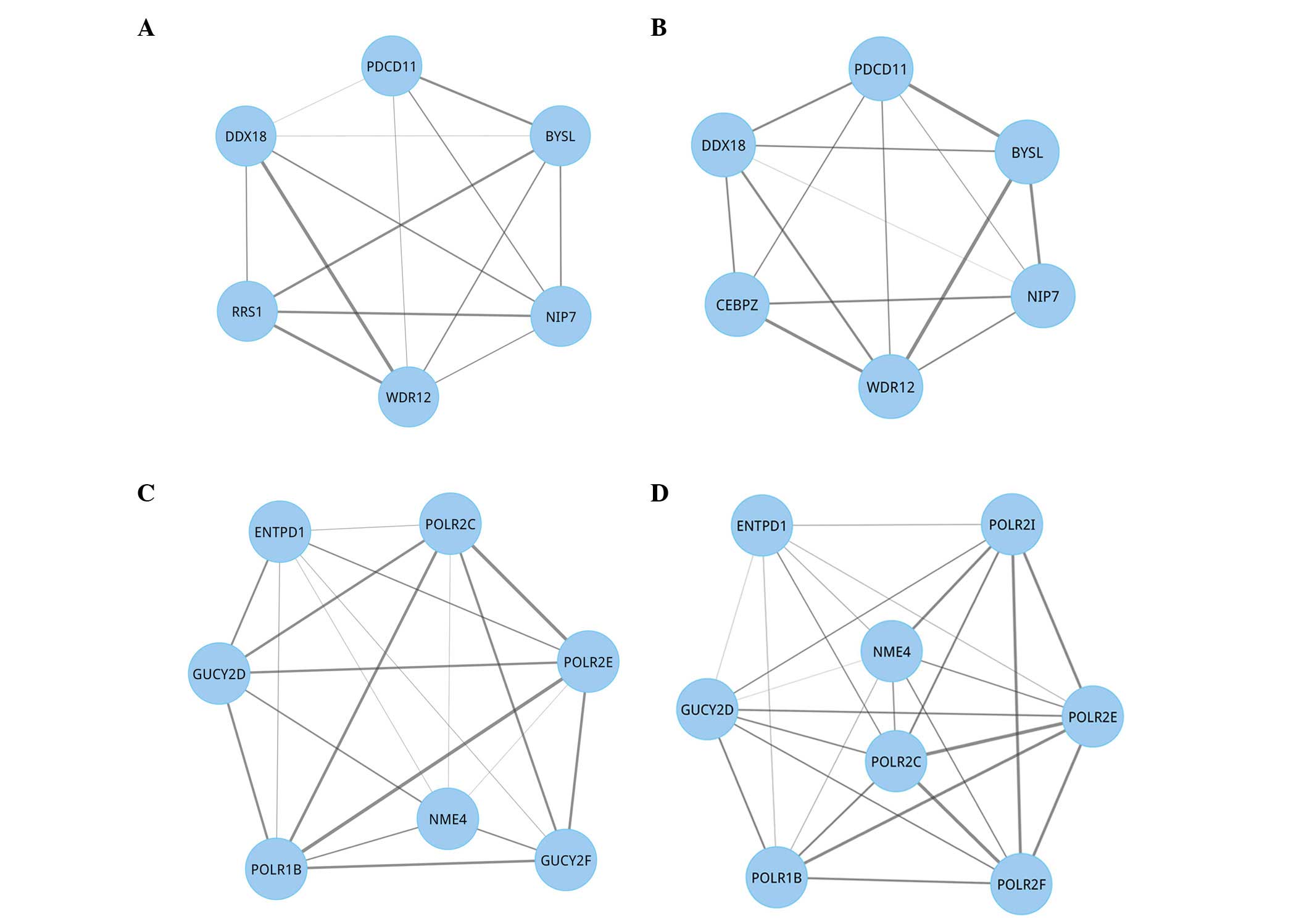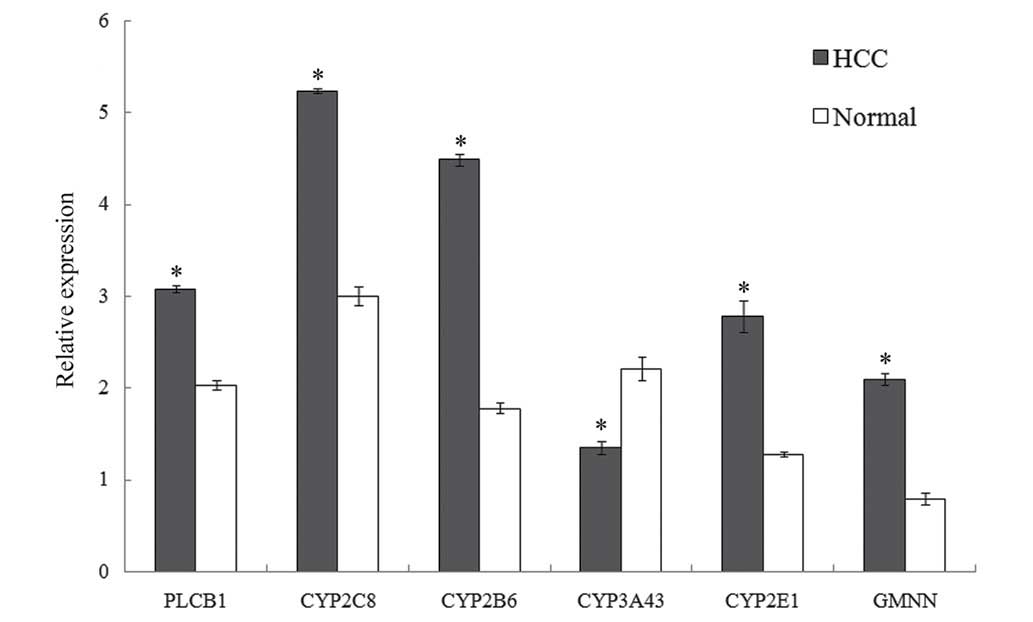|
1
|
Kaseb AO, Xiao L, Hassan MM, Chae YK, Lee
JS, Vauthey JN, Krishnan S, Cheung S, Hassabo HM, Aloia T, et al:
Development and validation of a scoring system using insulin-like
growth factor to assess hepatic reserve in hepatocellular
carcinoma. J Natl Cancer Inst. 106:pii: dju088. 2014. View Article : Google Scholar : PubMed/NCBI
|
|
2
|
Arzumanyan A, Reis HM and Feitelson MA:
Pathogenic mechanisms in HBV- and HCV-associated hepatocellular
carcinoma. Nat Rev Cancer. 13:123–135. 2013. View Article : Google Scholar : PubMed/NCBI
|
|
3
|
Aoki T, Kokudo N, Matsuyama Y, Izumi N,
Ichida T, Kudo M, Ku Y, Sakamoto M, Nakashima O, Matsui O, et al:
Prognostic impact of spontaneous tumor rupture in patients with
hepatocellular carcinoma: An analysis of 1160 cases from a
nationwide survey. Ann Surg. 259:532–542. 2014. View Article : Google Scholar : PubMed/NCBI
|
|
4
|
Llovet JM, Peña CE, Lathia CD, Shan M,
Meinhardt G and Bruix J: SHARP Investigators Study Group: Plasma
biomarkers as predictors of outcome in patients with advanced
hepatocellular carcinoma. Clin Cancer Res. 18:2290–2300. 2012.
View Article : Google Scholar : PubMed/NCBI
|
|
5
|
Doncheva NT, Kacprowski T and Albrecht M:
Recent approaches to the prioritization of candidate disease genes.
Wiley Interdiscip Rev Syst Biol Med. 4:429–442. 2012. View Article : Google Scholar : PubMed/NCBI
|
|
6
|
Srihari S and Ragan MA: Systematic
tracking of dysregulated modules identifies novel genes in cancer.
Bioinformatics. 29:1553–1561. 2013. View Article : Google Scholar : PubMed/NCBI
|
|
7
|
Liu KQ, Liu ZP, Hao JK, Chen L and Zhao
XM: Identifying dysregulated pathways in cancers from pathway
interaction networks. BMC Bioinformatics. 13:1262012. View Article : Google Scholar : PubMed/NCBI
|
|
8
|
Zhang J, Lu K, Xiang Y, Islam M, Kotian S,
Kais Z, Lee C, Arora M, Liu HW, Parvin JD and Huang K: Weighted
frequent gene co-expression network mining to identify genes
involved in genome stability. PLoS Comput Biol. 8:e10026562012.
View Article : Google Scholar : PubMed/NCBI
|
|
9
|
Magger O, Waldman YY, Ruppin E and Sharan
R: Enhancing the prioritization of disease-causing genes through
tissue specific protein interaction networks. PLoS Comput Biol.
8:e10026902012. View Article : Google Scholar : PubMed/NCBI
|
|
10
|
Liu Y, Koyutürk M, Barnholtz-Sloan JS and
Chance MR: Gene interaction enrichment and network analysis to
identify dysregulated pathways and their interactions in complex
diseases. BMC Syst Biol. 6:652012. View Article : Google Scholar : PubMed/NCBI
|
|
11
|
Jensen LJ, Kuhn M, Stark M, Chaffron S,
Creevey C, Muller J, Doerks T, Julien P, Roth A, Simonovic M, et
al: STRING 8-a global view on proteins and their functional
interactions in 630 organisms. Nucleic Acids Res. 37:(Database
issue). D412–D416. 2009. View Article : Google Scholar : PubMed/NCBI
|
|
12
|
Roessler S, Jia HL, Budhu A, Forgues M, Ye
QH, Lee JS, Thorgeirsson SS, Sun Z, Tang ZY, Qin LX and Wang XW: A
unique metastasis gene signature enables prediction of tumor
relapse in early-stage hepatocellular carcinoma patients. Cancer
Res. 70:10202–10212. 2010. View Article : Google Scholar : PubMed/NCBI
|
|
13
|
Roessler S, Long EL, Budhu A, Chen Y, Zhao
X, Ji J, Walker R, Jia HL, Ye QH, Qin LX, et al: Integrative
genomic identification of genes on 8p associated with
hepatocellular carcinoma progression and patient survival.
Gastroenterology. 142:957–966, e12. 2012. View Article : Google Scholar : PubMed/NCBI
|
|
14
|
Irizarry RA, Bolstad BM, Collin F, Cope
LM, Hobbs B and Speed TP: Summaries of Affymetrix GeneChip probe
level data. Nucleic Acids Res. 31:e152003. View Article : Google Scholar : PubMed/NCBI
|
|
15
|
Bolstad BM, Irizarry RA, Astrand M and
Speed TP: A comparison of normalization methods for high density
oligonucleotide array data based on variance and bias.
Bioinformatics. 19:185–193. 2003. View Article : Google Scholar : PubMed/NCBI
|
|
16
|
Bolstad B: affy: Built-in processing
methods. http://www.bioconductor.org/packages/release/bioc/vignettes/affy/inst/doc/builtinMethods.pdfMarch
26–2014
|
|
17
|
Williams S: Pearson's correlation
coefficient. N Z Med J. 109:381996.PubMed/NCBI
|
|
18
|
Liu G, Wong L and Chua HN: Complex
discovery from weighted PPI networks. Bioinformatics. 25:1891–1897.
2009. View Article : Google Scholar : PubMed/NCBI
|
|
19
|
Srihari S and Leong HW: A survey of
computational methods for protein complex prediction from protein
interaction networks. J Bioinform Comput Biol. 11:12300022013.
View Article : Google Scholar : PubMed/NCBI
|
|
20
|
Tomita E, Tanaka A and Takahashi H: The
worst-case time complexity for generating all maximal cliques and
computational experiments. Theor Comput Sci. 363:28–42. 2006.
View Article : Google Scholar
|
|
21
|
Gabow HN: An efficient implementation of
Edmonds' algorithm for maximum matching on graphs. JACM.
23:221–234. 1976. View Article : Google Scholar
|
|
22
|
da W Huang, Sherman BT and Lempicki RA:
Systematic and integrative analysis of large gene lists using DAVID
bioinformatics resources. Nat Protoc. 4:44–57. 2009.PubMed/NCBI
|
|
23
|
Ford G, Xu Z, Gates A, Jiang J and Ford
BD: Expression analysis systematic explorer (EASE) analysis reveals
differential gene expression in permanent and transient focal
stroke rat models. Brain Res. 1071:226–236. 2006. View Article : Google Scholar : PubMed/NCBI
|
|
24
|
Diboun I, Wernisch L, Orengo CA and
Koltzenburg M: Microarray analysis after RNA amplification can
detect pronounced differences in gene expression using limma. BMC
genomics. 7:2522006. View Article : Google Scholar : PubMed/NCBI
|
|
25
|
Schmittgen TD and Livak KJ: Analyzing
real-time PCR data by the comparative C(T) method. Nat Protoc.
3:1101–1108. 2008. View Article : Google Scholar : PubMed/NCBI
|
|
26
|
Poduri A, Chopra SS, Neilan EG, Elhosary
PC, Kurian MA, Meyer E, Barry BJ, Khwaja OS, Salih MA, Stödberg T,
et al: Homozygous PLCB1 deletion associated with malignant
migrating partial seizures in infancy. Epilepsia. 53:e146–e150.
2012. View Article : Google Scholar : PubMed/NCBI
|
|
27
|
Jia D, Wei L, Guo W, Zha R, Bao M, Chen Z,
Zhao Y, Ge C, Zhao F, Chen T, et al: Genome-wide copy number
analyses identified novel cancer genes in hepatocellular carcinoma.
Hepatology. 54:1227–1236. 2011. View Article : Google Scholar : PubMed/NCBI
|
|
28
|
Das T, Diamond DL, Yeh M, Hassan S, Bryan
JT, Reyes JD and Perkins JD: Molecular signatures of recurrent
hepatocellular carcinoma secondary to hepatitis C virus following
liver transplantation. J Transplant. 2013:8782972013. View Article : Google Scholar : PubMed/NCBI
|
|
29
|
Danielson PB: The cytochrome P450
superfamily: biochemistry, evolution and drug metabolism in humans.
Curr Drug Metab. 3:561–597. 2002. View Article : Google Scholar : PubMed/NCBI
|
|
30
|
Depaz IM Booth, Toselli F, Wilce PA and
Gillam EM: Differential expression of cytochrome P450 enzymes from
the CYP2C subfamily in the human brain. Drug Metab Dispos.
43:353–357. 2015. View Article : Google Scholar : PubMed/NCBI
|
|
31
|
Yu Y, Ping J, Chen H, Jiao L, Zheng S, Han
ZG, Hao P and Huang J: A comparative analysis of liver
transcriptome suggests divergent liver function among human, mouse
and rat. Genomics. 96:281–289. 2010. View Article : Google Scholar : PubMed/NCBI
|
|
32
|
Hertz DL, Roy S, Jack J, Motsinger-Reif
AA, Drobish A, Clark LS, Carey LA, Dees EC and McLeod HL: Genetic
heterogeneity beyond CYP2C8*3 does not explain differential
sensitivity to paclitaxel-induced neuropathy. Breast Cancer Res
Treat. 145:245–254. 2014. View Article : Google Scholar : PubMed/NCBI
|
|
33
|
Bergmann TK, Brasch-Andersen C, Gréen H,
Mirza MR, Skougaard K, Wihl J, Keldsen N, Damkier P, Peterson C,
Vach W and BrØsen K: Impact of ABCB1 variants on neutrophil
depression: A pharmacogenomic study of paclitaxel in 92 women with
ovarian cancer. Basic Clin Pharmacol Toxicol. 110:199–204. 2012.
View Article : Google Scholar : PubMed/NCBI
|
|
34
|
Bergmann TK, Brasch-Andersen C, Gréen H,
Mirza M, Pedersen RS, Nielsen F, Skougaard K, Wihl J, Keldsen N,
Damkier P, et al: Impact of CYP2C8x3 on paclitaxel
clearance: A population pharmacokinetic and pharmacogenomic study
in 93 patients with ovarian cancer. Pharmacogenomics J. 11:113–120.
2011. View Article : Google Scholar : PubMed/NCBI
|
|
35
|
Läpple F, von Richter O, Fromm MF, Richter
T, Thon KP, Wisser H, Griese EU, Eichelbaum M and Kivistö KT:
Differential expression and function of CYP2C isoforms in human
intestine and liver. Pharmacogenetics. 13:565–575. 2003. View Article : Google Scholar : PubMed/NCBI
|
|
36
|
Zhang SY, Surapureddi S, Coulter S,
Ferguson SS and Goldstein JA: Human CYP2C8 is
post-transcriptionally regulated by microRNAs 103 and 107 in human
liver. Mol Pharmacol. 82:529–540. 2012. View Article : Google Scholar : PubMed/NCBI
|
|
37
|
Naraharisetti SB, Lin YS, Rieder MJ,
Marciante KD, Psaty BM, Thummel KE and Totah RA: Human liver
expression of CYP2C8: gender, age, and genotype effects. Drug Metab
Dispos. 38:889–893. 2010. View Article : Google Scholar : PubMed/NCBI
|
|
38
|
Ekins S and Wrighton SA: The role of
CYP2B6 in human xenobiotic metabolism. Drug Metab Rev. 31:719–754.
1999. View Article : Google Scholar : PubMed/NCBI
|
|
39
|
Kumagai J, Fujimura T, Takahashi S, Urano
T, Ogushi T, Horie-Inoue K, Ouchi Y, Kitamura T, Muramatsu M,
Blumberg B and Inoue S: Cytochrome P450 2B6 is a growth-inhibitory
and prognostic factor for prostate cancer. Prostate. 67:1029–1037.
2007. View Article : Google Scholar : PubMed/NCBI
|
|
40
|
Lee JH, Shim JH, Chung YH, Lee D, Lee HC
and Shin ES: Genetic polymorphisms associated with treatment
toxicity after sorafenib combination therapy in Korean patients
with hepatocellular carcinoma. Clin Mol Hepatol. 17:362011.
|
|
41
|
Chen H, Shen ZY, Xu W, Fan TY, Li J, Lu
YF, Cheng ML and Liu J: Expression of P450 and nuclear receptors in
normal and end-stage Chinese livers. World J Gastroenterol.
20:8681–8690. 2014. View Article : Google Scholar : PubMed/NCBI
|
|
42
|
Cillo C, Schiavo G, Cantile M, Bihl MP,
Sorrentino P, Carafa V, D'Armiento M, Roncalli M, Sansano S,
Vecchione R, et al: The HOX gene network in hepatocellular
carcinoma. Int J Cancer. 129:2577–2587. 2011. View Article : Google Scholar : PubMed/NCBI
|
|
43
|
Liu Z, Gartenhaus RB, Tan M, Jiang F and
Jiao X: Gene and pathway identification with Lp penalized Bayesian
logistic regression. BMC Bioinformatics. 9:4122008. View Article : Google Scholar : PubMed/NCBI
|
|
44
|
Wang L, Huang J, Jiang M and Zheng X: AFP
computational secreted network construction and analysis between
human hepatocellular carcinoma (HCC) and no-tumor
hepatitis/cirrhotic liver tissues. Tumor Biol. 31:417–425. 2010.
View Article : Google Scholar
|
|
45
|
Zhao Y, Xue F, Sun J, Guo S, Zhang H, Qiu
B, Geng J, Gu J, Zhou X, Wang W, et al: Genome-wide methylation
profiling of the different stages of hepatitis B virus-related
hepatocellular carcinoma development in plasma cell-free DNA
reveals potential biomarkers for early detection and high-risk
monitoring of hepatocellular carcinoma. Clin Epigenetics. 6:302014.
View Article : Google Scholar : PubMed/NCBI
|
|
46
|
Liao KC, Pu SJ, Lin CH, Chang HJ, Chen YJ
and Liu MS: Association between the metabolic syndrome and its
components with falls in community-dwelling older adults. Metab
Syndr Relat Disord. 10:447–451. 2012. View Article : Google Scholar : PubMed/NCBI
|
|
47
|
Chan W, Lin S, Sun S, Liu H, Luk JM and
Cai Z: Metabolomics analysis of the responses to partial
hepatectomy in hepatocellular carcinoma patients. Am J Analyt Chem.
2:142–151. 2011. View Article : Google Scholar
|
|
48
|
Baniasadi H, Gowda GA, Gu H, Zeng A,
Zhuang S, Skill N, Maluccio M and Raftery D: Targeted metabolic
profiling of hepatocellular carcinoma and hepatitis C using
LC-MS/MS. Electrophoresis. 34:2910–2917. 2013.PubMed/NCBI
|
|
49
|
Cheng S, Prot JM, Leclerc E and Bois FY:
Zonation related function and ubiquitination regulation in human
hepatocellular carcinoma cells in dynamic vs. static culture
conditions. BMC Genomics. 13:542012. View Article : Google Scholar : PubMed/NCBI
|
|
50
|
Lv J, Zhu B, Zhang L, Xie Q and Zhuo W:
Detection and screening of small molecule agents for overcoming
Sorafenib resistance of hepatocellular carcinoma: A bioinformatics
study. Int J Clin Exp Med. 8:2317–2325. 2015.PubMed/NCBI
|
|
51
|
Villeneuve JP and Pichette V: Cytochrome
P450 and liver diseases. Curr Drug Metab. 5:273–282. 2004.
View Article : Google Scholar : PubMed/NCBI
|


















